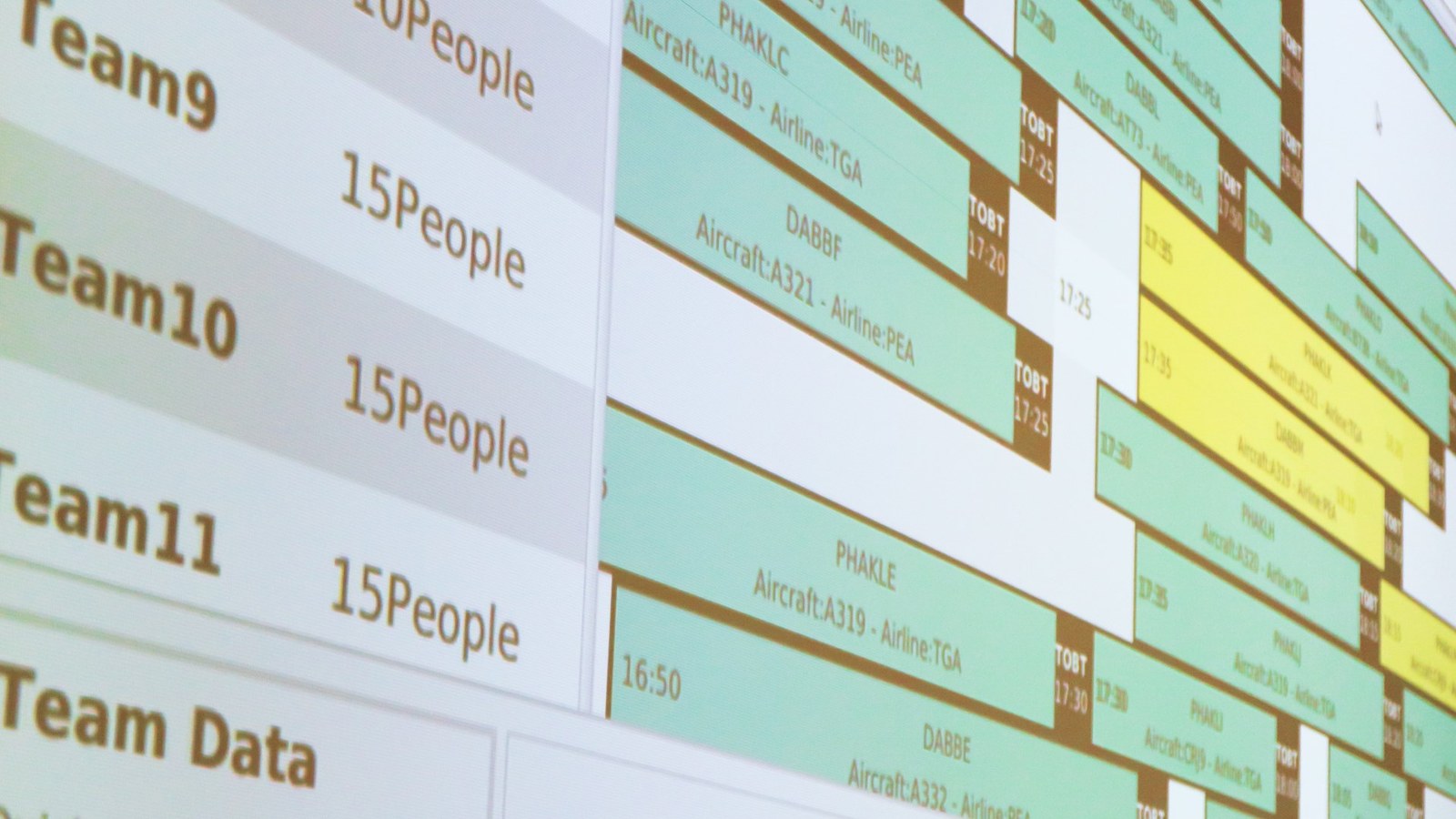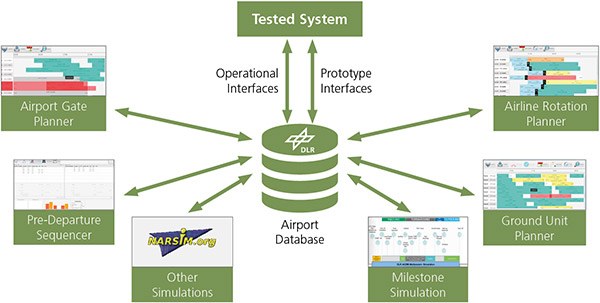Airport Management Simulation Platform (AMSP)

The Airport Management Simulation Platform (AMSP) was developed at the Institute of Flight Guidance as a powerful and scalable validation environment for the investigation and evaluation of concepts for improved management of airport processes (TAM and PBAM) in the ACCES control center simulator.
Optimally coordinated and highly efficient airport management requires a specialized solution. Each airport carries out individual operations to which the decision-making process, collaboration between stakeholders and multiple supporting systems must be adapted. The research community offers a wide range of solutions ranging from basic airport collaborative decision making (A-CDM) to advanced capabilities such as virtual airport operations centers, real-world What-If assessments and collaboration support mechanisms. Selecting and adapting these solutions to the needs of airport operations is a major challenge.
DLR's Airport Management Simulation Platform addresses this challenge with a human-in-the-loop simulation and validation environment. It makes it possible to apply the concepts and systems in the simulation to any airport. Negotiations and teamwork between the various parties involved can also be thoroughly examined during the simulation. The central element of this simulation platform is a digital twin of the airport. Airport and scenario data (e.g. airport layout, flight plans, weather conditions) are stored in a central database. A milestone simulation of airport processes calculates flight times depending on defined events and conditions.
Decision support systems and extended A-CDM
The A-CDM concept has created a standard for the airside operational management of airports. Since the introduction of this concept, possibilities have been explored to extend A-CDM with additional systems and procedures. Tools to support stakeholder negotiations (e.g. dashboards), algorithms to predict the impact of certain management decisions (e.g. KPI history; what-if tools) and procedures to prioritize certain aircraft (e.g. user-driven prioritization) can be developed, integrated and validated in an operational environment using the flexibility of the Airport Management Simulation Platform.
Depending on the simulation requirements, the airport, scenario and working positions can be adapted to any operational configuration. The simulation can be run for individual operators or teams. For simulations in which entire teams are to interact with each other, a large number of work positions can be filled. These can be combined centrally in an Airport Operations Centre (APOC) or distributed decentral to several spatially separated stations.
ACCES with its Airport Management Simulation Platform is the only V3-approved validation platform for airport management in Europe and is used in the corresponding SESAR projects to evaluate total airport management concepts.

